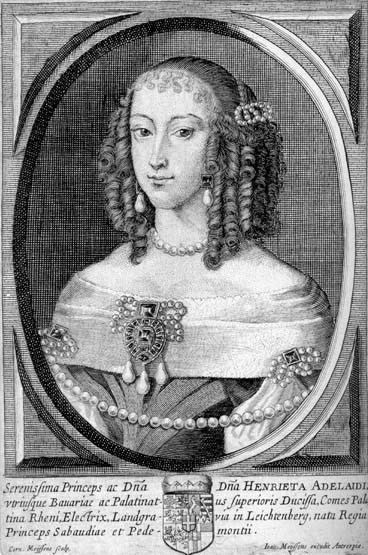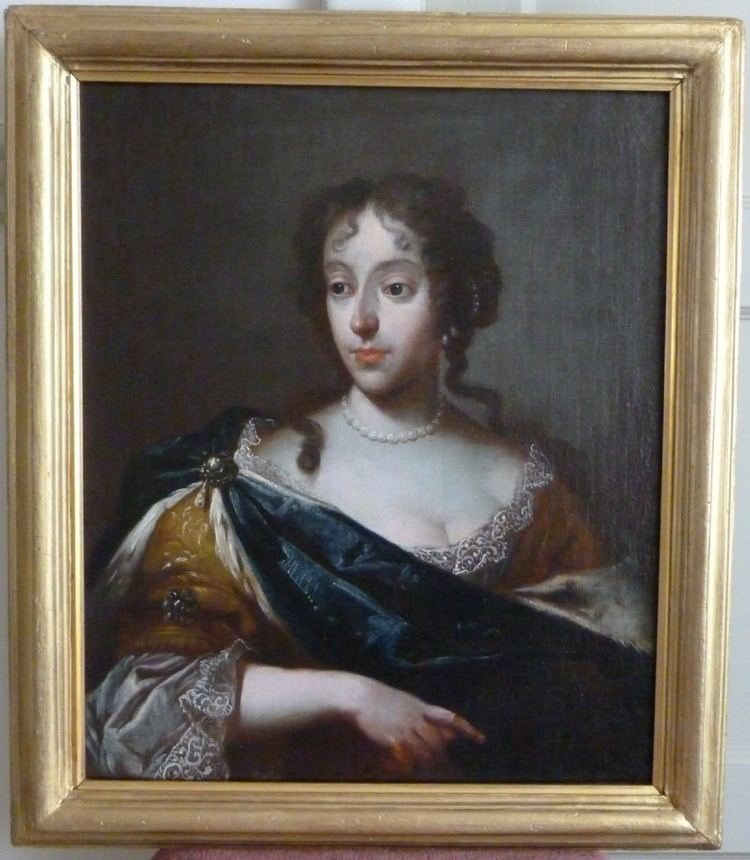Religion Roman Catholicism | Name Princess Adelaide | |
 | ||
Consort 27 September 1651 – 13 June 1676 IssueDetail Maria Anna Victoria, Dauphine of FranceMaximilian II Emanuel, Elector of BavariaJoseph Clemens, Elector-Archbishop of CologneViolante Beatrice, Grand Princess of Tuscany Children Maximilian II Emanuel, Elector of Bavaria Parents Christine of France, Victor Amadeus I, Duke of Savoy Similar People Maximilian II Emanuel - Elector of, Charles VII - Holy Roman E, Christine of France, Maximilian I - Elector of Bavaria, Duchess Violante Beatrice | ||
Henriette Adelaide of Savoy (Enrichetta Adelaide Maria; 6 November 1636 – 13 June 1676), was Electress of Bavaria by marriage to Ferdinand Maria, Elector of Bavaria. She had much political influence in her adopted country and with her husband did much to improve the welfare of the Electorate of Bavaria.
Contents

Princess of Savoy
Born at the Castello del Valentino in Turin, she was the older of twin girls; her sister Princess Catherine Beatrice of Savoy died in Turin 26 August 1637. On 7 October 1637 she lost her father Victor Amadeus I, Duke of Savoy, when she was just one year old. Her mother, Christine of France, was the daughter of Henry IV of France and Marie de' Medici. After the death of her father, her mother served as Regent of Savoy on behalf of two of Henriette Adelaide's brothers: Francis Hyacinth (1632–1638), then Charles Emmanuel II (1634–1675) after the older brother died. Her uncles Prince Maurice of Savoy and Thomas Francis, Prince of Carignano, intrigued against their sister-in-law and her French entourage.
When the first heir Francis Hyacinth died in 1638, the brothers Maurice and Thomas started the Piedmontese Civil War with Spanish support. The two parties in the war were known as the "principisti" (supporters of the princes) and "madamisti" (supporters of "Madama Reale," the Regent Christine ). With the support of her brother, King Louis XIII of France, Marie Christine was able to defeat the challenge to her rule.
Electress of Bavaria
On 8 December 1650 Henriette married Ferdinand Maria, heir to the Electorate of Bavaria future. The next year he became Elector upon the death of his father Maximilian.
Henriette Adelaide had a strong influence on Bavarian foreign affairs in favor of France, whose royal family counted her mother as a member. This led to an alliance between France and Bavaria against Austria. One of the results of the alliance was the marriage of Henriette's eldest daughter Maria Anna and her cousin Louis, Dauphin of France (le Grand Dauphin), in 1680.
She had a leading role in the building of Nymphenburg Palace and the Theatine Church in Munich. Many Italian artists were invited to Munich, and she also introduced Italian opera to the court of Bavaria.
Henriette died in Munich and was buried in the Theatine Church - the church she and her husband built as a gesture of thanks for the birth of the long-awaited heir to the Bavarian crown, Prince Maximilan II Emanuel, in 1662.
Issue
In addition, the Electress suffered three miscarriages: in June 1661, March 1664 and 1674.
